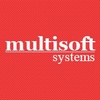SAP EHS (Environment, Health, and Safety) represents a significant leap forward for organizations aiming to prioritize sustainability and ensure the safety and well-being of their workforce while adhering to environmental regulations. This comprehensive solution integrates seamlessly with other SAP modules, offering a centralized platform for managing a wide range of EHS tasks.
At its core, SAP EHS training by Multisoft Systems is a module within the broader SAP ERP system designed to help businesses manage their environmental, health, and safety obligations more effectively. It enables companies to track and reduce emissions, manage chemicals safely, ensure workplace safety, and comply with global and local environmental, health, and safety regulations. By automating and streamlining EHS processes, SAP EHS not only helps companies meet legal standards but also promotes a culture of safety and environmental responsibility.
Key Features
- Compliance Management: SAP EHS simplifies the complexity of complying with regulatory requirements by providing tools to monitor and manage compliance tasks across different jurisdictions.
- Hazardous Substance Management: It offers comprehensive capabilities to manage hazardous substances, including inventory tracking, safety data sheet management, and regulatory reporting, ensuring safe handling and storage.
- Occupational Health: This feature focuses on protecting employees’ health by monitoring workplace hazards, managing medical checks, and tracking health indicators over time.
- Safety Measures and Risk Management: SAP EHS facilitates the identification, evaluation, and mitigation of risks associated with workplace safety and environmental hazards, helping to prevent accidents and incidents.
- Waste Management: It provides tools for managing waste disposal processes, including waste classification, transportation, and disposal documentation, aiding in sustainable waste management practices.
- Environmental Management: This encompasses monitoring and reporting on air emissions, water discharges, and energy use, supporting efforts to reduce an organization’s environmental footprint.
Benefits of Using SAP EHS
- Enhanced Compliance: With SAP EHS, companies can stay ahead of regulatory changes and ensure compliance with environmental, health, and safety standards, reducing the risk of legal issues and penalties.
- Risk Reduction: By proactively managing hazards and risks, SAP EHS helps reduce the potential for workplace accidents and environmental incidents, safeguarding employees and the environment.
- Operational Efficiency: Automating and centralizing EHS processes leads to significant improvements in operational efficiency, enabling companies to manage EHS tasks more effectively and with fewer resources.
- Sustainability Promotion: SAP EHS supports sustainable business practices by enabling companies to monitor and reduce their environmental impact, aligning with global sustainability goals and improving corporate image.
- Data-Driven Decision Making: The unified platform aggregates data from various sources, providing valuable insights that help in making informed decisions regarding EHS initiatives and improvements.
Functionalities
The SAP EHS (Environment, Health, and Safety) system is equipped with a suite of functionalities designed to address the comprehensive needs of businesses in maintaining a safe, healthy, and environmentally responsible operation. Here's a closer look at these functionalities and how they support enterprises in achieving their EHS goals:
- Employee Health and Safety Functionality
This functionality is foundational to fostering a safe work environment and promoting employee well-being. It encompasses a range of tools for hazard identification, risk assessment, incident management, and health surveillance. With these capabilities, companies can proactively manage workplace risks, comply with occupational health and safety regulations, and implement preventive measures to reduce the incidence of workplace injuries and illnesses. Features like injury and illness reporting, safety training management, and health monitoring are integral to maintaining a culture of safety and health within the organization.
- Product Safety Functionality
Ensuring product safety is paramount in today’s regulatory environment. SAP EHS's Product Safety functionality helps organizations manage the safety aspects of their products across the entire lifecycle, from design and production to distribution and disposal. This includes managing Safety Data Sheets (SDS), ensuring proper labeling and packaging, and conducting safety assessments. By enabling compliance with global and local product safety regulations, this functionality helps businesses protect consumers, avoid legal and financial penalties, and maintain their reputation in the market.
- Environmental Compliance Management Functionality
Environmental compliance management is critical for businesses looking to adhere to environmental laws and regulations, such as emissions reporting, waste management, and water quality standards. SAP EHS provides tools for tracking environmental impacts, managing permits and reporting requirements, and conducting audits and inspections. This functionality supports businesses in their efforts to minimize their environmental footprint, manage waste responsibly, and ensure continuous compliance with evolving environmental regulations.
- Product and REACH Compliance Functionality
Product compliance is essential for navigating the complex landscape of global trade and market access requirements. This includes managing substances, ensuring compliance with regulations like REACH (Registration, Evaluation, Authorization, and Restriction of Chemicals), and maintaining product documentation and certifications. SAP EHS’s Product and REACH Compliance functionalities offer a robust framework for managing these requirements, facilitating compliance with substance regulations, and ensuring that products meet the necessary safety and environmental standards before they reach the market.
What skills will you learn?
- Understanding and leveraging specific tools, software, or methodologies relevant to your field.
- The ability to analyze situations, identify problems, and develop logical solutions.
- Effective verbal and written communication skills, including the ability to present information clearly and persuasively.
- Skills in organizing, planning, and executing projects to meet objectives within constraints of time, budget, and scope.
- The capability to collect, process, and interpret data to inform decisions.
- Leading teams effectively, motivating others, and managing conflicts.
- The ability to adjust to new conditions, technologies, and challenges quickly.
Conclusion
SAP EHS online training by Multisoft Systems stands as a testament to SAP's commitment to supporting organizations in their environmental, health, and safety efforts. As businesses increasingly recognize the importance of sustainable practices and workplace safety, SAP EHS emerges as an essential tool for managing these critical aspects effectively. By leveraging SAP EHS, companies can not only ensure compliance and reduce risks but also contribute positively to their community and the environment, paving the way for a more sustainable future.


No comments yet